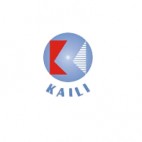In order to improve the structure and surface quality of the billet in vertical casting, electromagnetic crystallization tanks, short crystallization tanks and hot top casting methods have also been developed (see solidification of metals). The thickness of the aluminum clad layer is generally 4% of the thickness of the sheet. The deformation rate of the first few passes is generally within 10%, and it will gradually increase in the future.
For hard aluminum alloys such as LY12 and LC4 with complex chemical composition, homogenization treatment should be carried out before hot rolling. The water-cooled semi-continuous casting method is to introduce liquid metal into a water-cooled crystallizer through a launder, so that the liquid metal is cooled to form a solidified shell, which is pulled by the base of the casting machine or dropped out of the crystallizer by its own weight to form an ingot. The hot-rolling billet temperature of LY11, LY12 and other alloys is 400~455℃.
The clad aluminum of duralumin is to place the clad aluminum plate on both sides of the milled billet and join by hot rolling. The total deformation rate of hot rolling can reach more than 90%. In order to improve the yield and production efficiency, develop large ingot rolling, which weighs more than 10 to 15 tons. The hot-rolled strip is used as cold-rolled billet after coiling. In factories with an output of more than 100,000 tons, most of the four-high reversible hot rolling mills adopt single-stand, two-stand, three-stand, and five-stand continuous rolling after the billet is opened.
Hot rolling can be carried out on a single-stand reversing mill or continuous rolling on multiple stands. Plate and strip production adopts flat roll rolling, and the basic processes are hot rolling, cold rolling, heat treatment and finishing. Generally, the casting speed and cooling rate should be increased as much as possible, and the height of the crystallization tank should be reduced. Hot rolling is generally performed above the recrystallization temperature. The pass deformation rate of pure aluminum and soft aluminum alloy can reach 50%, and that of hard aluminum alloy is about 40%. For factories with an annual output of less than 100,000 tons, four-roll reversible hot rolling and hot coiling are generally used, and the thickness of the hot-rolled strip is about 6-8 mm.
The process parameters vary greatly due to the alloy composition and billet size. In addition, the continuous casting and rolling process of aluminum strip has been developed. The treatment temperature is generally lower than the eutectic temperature of the low-melting phase in the alloy by 10-15°C, and the temperature is maintained for 12-24 Torque Converter Housing Foundry hours.5-3.5 Mm. The casting temperature is usually 50 to 110°C higher than the liquidus line of the alloy. The hot finish rolling is implemented, and the strip thickness can reach 2. In order to preserve the plasticity of the metal, hot rolling should be carried out in a single-phase structure.Aluminum casting generally adopts vertical or horizontal water-cooled semi-continuous casting method
https://www.best-autoparts.com/product/low-pressure-casting/torque-converter-housing.html
For hard aluminum alloys such as LY12 and LC4 with complex chemical composition, homogenization treatment should be carried out before hot rolling. The water-cooled semi-continuous casting method is to introduce liquid metal into a water-cooled crystallizer through a launder, so that the liquid metal is cooled to form a solidified shell, which is pulled by the base of the casting machine or dropped out of the crystallizer by its own weight to form an ingot. The hot-rolling billet temperature of LY11, LY12 and other alloys is 400~455℃.
The clad aluminum of duralumin is to place the clad aluminum plate on both sides of the milled billet and join by hot rolling. The total deformation rate of hot rolling can reach more than 90%. In order to improve the yield and production efficiency, develop large ingot rolling, which weighs more than 10 to 15 tons. The hot-rolled strip is used as cold-rolled billet after coiling. In factories with an output of more than 100,000 tons, most of the four-high reversible hot rolling mills adopt single-stand, two-stand, three-stand, and five-stand continuous rolling after the billet is opened.
Hot rolling can be carried out on a single-stand reversing mill or continuous rolling on multiple stands. Plate and strip production adopts flat roll rolling, and the basic processes are hot rolling, cold rolling, heat treatment and finishing. Generally, the casting speed and cooling rate should be increased as much as possible, and the height of the crystallization tank should be reduced. Hot rolling is generally performed above the recrystallization temperature. The pass deformation rate of pure aluminum and soft aluminum alloy can reach 50%, and that of hard aluminum alloy is about 40%. For factories with an annual output of less than 100,000 tons, four-roll reversible hot rolling and hot coiling are generally used, and the thickness of the hot-rolled strip is about 6-8 mm.
The process parameters vary greatly due to the alloy composition and billet size. In addition, the continuous casting and rolling process of aluminum strip has been developed. The treatment temperature is generally lower than the eutectic temperature of the low-melting phase in the alloy by 10-15°C, and the temperature is maintained for 12-24 Torque Converter Housing Foundry hours.5-3.5 Mm. The casting temperature is usually 50 to 110°C higher than the liquidus line of the alloy. The hot finish rolling is implemented, and the strip thickness can reach 2. In order to preserve the plasticity of the metal, hot rolling should be carried out in a single-phase structure.Aluminum casting generally adopts vertical or horizontal water-cooled semi-continuous casting method
https://www.best-autoparts.com/product/low-pressure-casting/torque-converter-housing.html

コメント